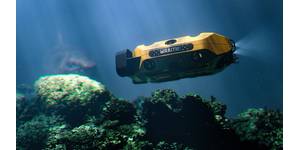Marine Technology Reporter Blogs - injection
Water-Alternating-Gas injection

Brazil’s National Operator, Petrobras has been experimenting with advanced Water-Alternating-Gas injection in a number of offshore plays and recently at the Rio O&G 2014, Petrobras’ Pre-salt manager confirmed that the super-major will be using the technology at most, if not all of its pre-salt plays. The WAG injection process aims to recover more oil from a reservoir and also to recover oil more efficiently. The technology was originally intended to improve sweep efficiency during gas flooding, with intermittent slugs of water and gas designed by and large to follow the same route through the reservoir. Variants include injecting gas as a supplement to water or vice versa, primarily to reach other parts of the reservoir.
Water Injection improving deepwater and mature field EOR
Enhanced Oil Recovery (EOR) can increase the volume of recovered oil from a well mainly through the use of two distinct techniques. One is water injection, which is increasingly being used in mature fields and another is CO2 injection which is mostly used in deepwater fields and according to Petrobras will be extensively used at many of the pre-salt fields in Brazil, as these fields usually contain significant amounts of CO2 along with oil and gas. These are secondary production processes. The production process always refers to oil that is recovered naturally from a producing well, that is without the use of pressure or flow stimulants, such as water or CO2.
Pre-salt Seafloor Construction/Remote Operations Challenges Part 2

According to Petrobras production engineers, secondary recovery is increasingly being implemented to improve oil recovery in the pre-salt carbonates, where reservoir rocks are usually oil wet, and this characteristic affects the performance of water injection. Another problem concerning water injection is related to rock-fluid interaction, which is more important and complex in carbonates. In order to assess the risks involved, as well as to define mitigation actions, rock-fluid interaction tests are being carried out in the reservoir rock and the salt cap rock. Alternative recovery methods are being implemented in the pre-salt reservoirs.


 August 2025
August 2025



